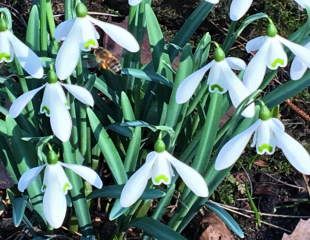How to Create a Wildlife-Friendly Garden
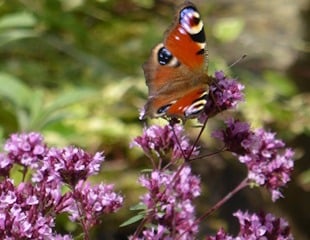

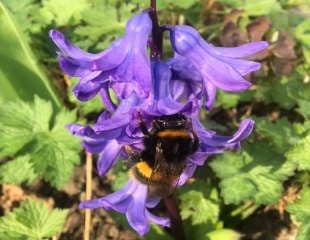
By creating a wildlife-friendly garden, you can attract a diverse range of wildlife to your garden. Consider your garden as a green corridor, playing a vital role in supporting the well-being and survival of local species. By applying key principles of biodiversity, you can enhance your garden’s ecological value and help sustain a wider variety of insects, pollinators, and other wildlife.
Key Ideas for Wildlife Gardens and Pollinators
Plant nectar and pollen-rich shrubs and plants.
Plant for successive flowering so that there is always food for bees and butterflies throughout the year.
Plant many species; greater biodiversity will attract a greater biodiversity of insects and wildlife.
Smell matters; some pollinators navigate by smell.
More plants, less hard landscaping.
Leave some of the lawn alone, it frees the dandelions, clover. It will attract pollinators, insects, birds foraging on the insects and more.
Your Guide to Creating a wildlife friendly Garden
10 Best Plants for Bees and Butterflies

It is important to plant nectar and pollen-rich plants, which provide pollinators with much-needed food. Here is a list of some of the best plants for attracting bees and butterflies. Tried and tested, with videos to prove it.
Spring flowers provide early nectar for bees
Bees emerge early in the year, and they are often hungry. For this reason important to provide food by growing, starting with the early flowering wildlife-friendly plants. There is a good selection of spring-flowering plants, which will help the bees along.
Create a wild garden, letting nature grow itself
Creating a wild garden, or wild area, is easy. An area left to go wild is quickly populated with native wildflowers, which are excellent at supporting a range of pollinators and insects. I took this image in a section of my wild garden, and a video provides more information with top tips.
10 Best Plants for Bees
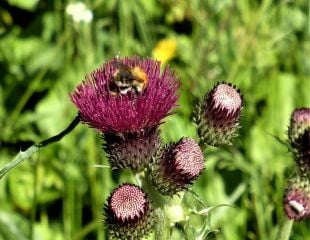
Some plants are just bee magnets, and adding a few to your garden guarantees a buzz. Pick and mix some bee-friendly plants from this list of the top 10. This page has the best bee friendly plant infomation.
How to Help Bumble bees
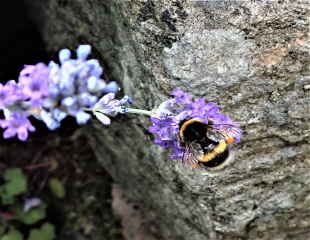
We can help bumblebees thrive in our garden by planting all-year-round food, promoting diversity, and reducing pesticides. There is more information on this page about how to help bumble bees.
Grow Wildflowers
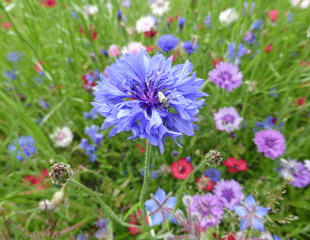
Wildflowers are great for attracting bees and butterflies. You don't have to create a big meadow. Here is information about an easy way to create a wildflower area to bring pollinators into your garden.
Attract More Birds into Your Garden
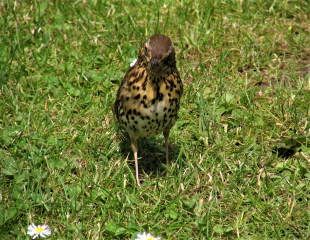
Birds are looking for food, water and shelter. Some garden shrubs provide birds with everything they need to survive and raise their young. Shrubs and a water source are very important to birds.Top tips and Ideas to make your garden bird-friendly.
Long grass is a haven for insects
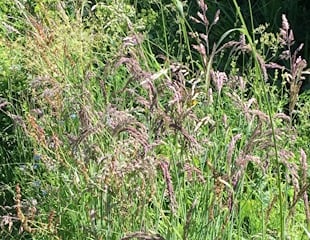
Leaving a patch of grass to grow over the summer provides a haven for insects, a habitat for moths, and later, the birds will feed on the wildlife in the lawn.
It creates biodiversity and is great for wildlife. More about no-mow lawns.
Water is essential
to wildlife
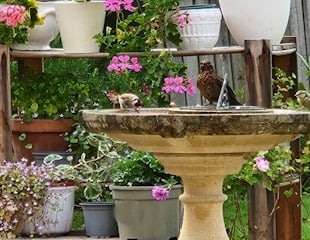
Providing a source of water will bring wildlife into your garden. A simple birdbath attracts not just birds, but bees and pollinators. Create a small pond, and frogs, damselflies, hawkers, and wildlife in abundance will visit.
If you are interested in identifying what sort of bees are visiting your garden, this is a great free guide from Friends of the Earth with good, clear descriptions and illustrations.
The Butterfly Conservation organisation has a handy guide to identify our native butterflies.

